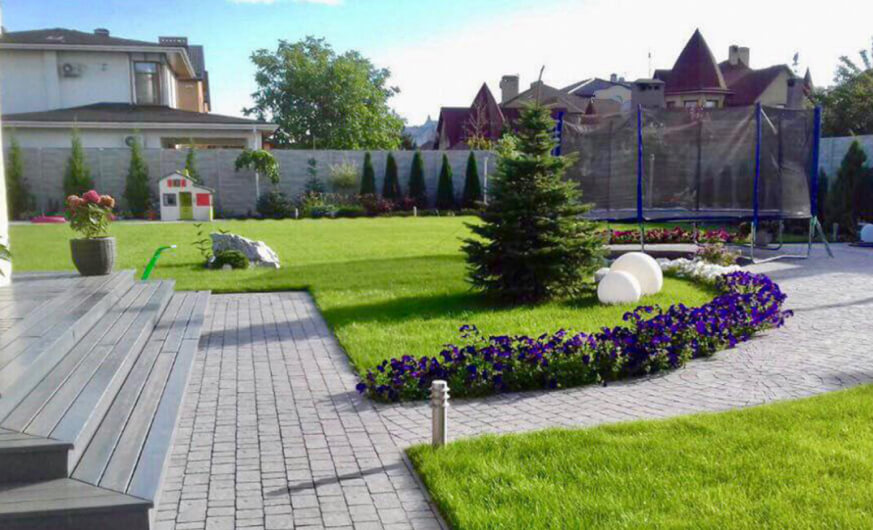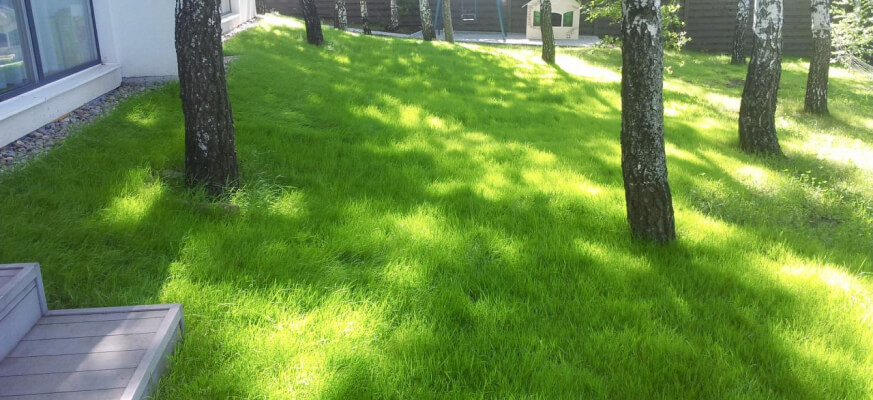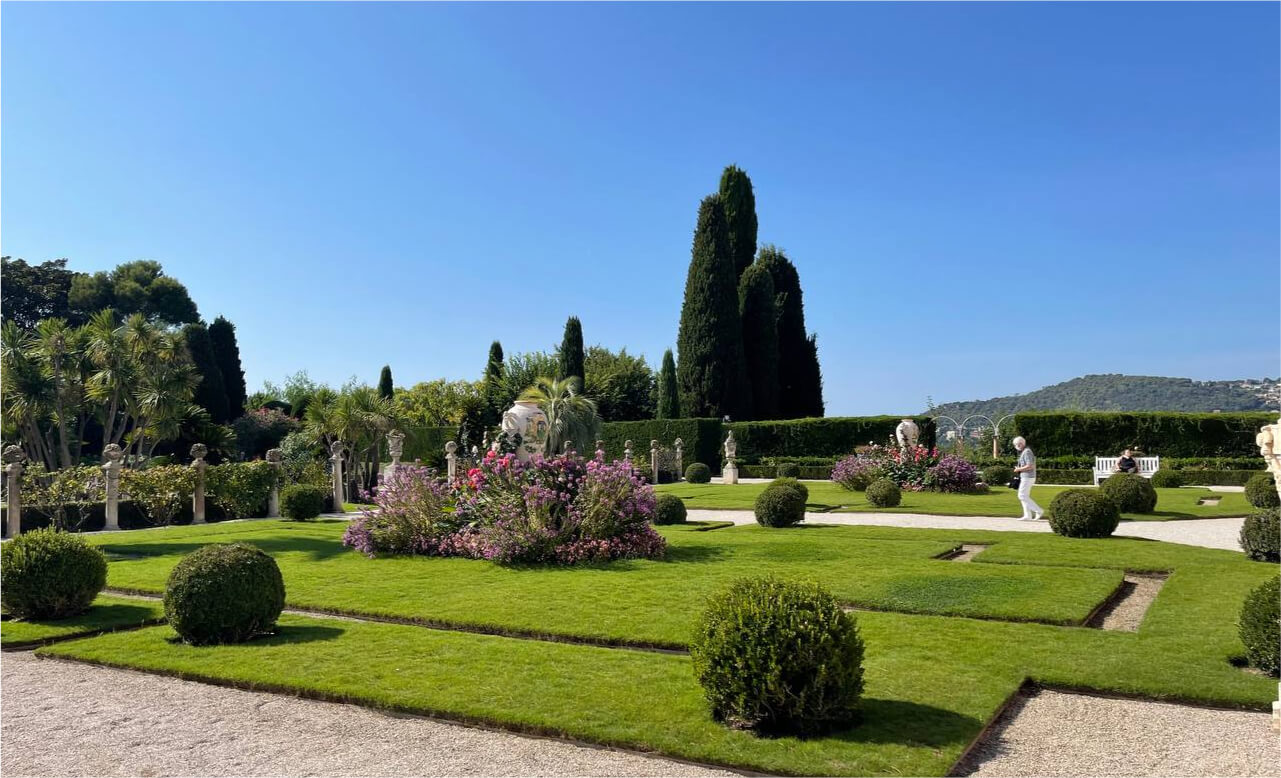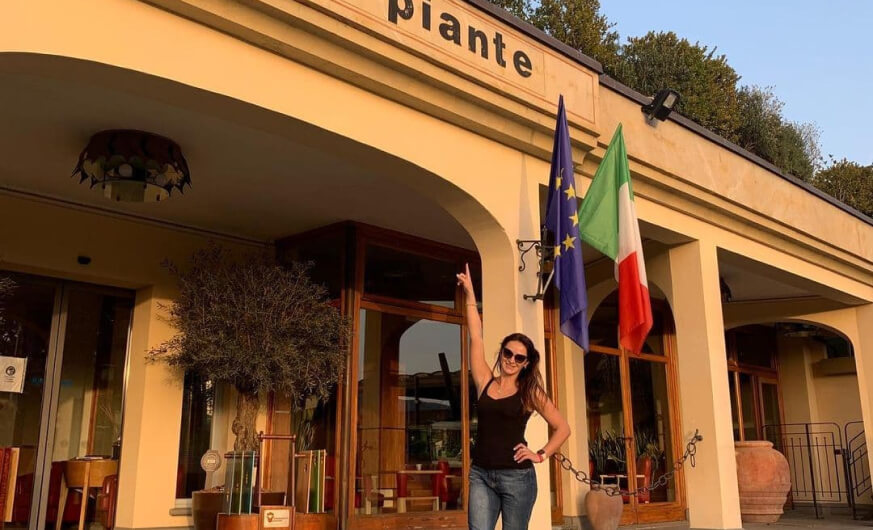Lawn types

Roll Lawn
Grown for two years on the nursery field using a special technology. In the process of growing, top dressing with fertilizers, weed and disease control, and regular mowing are constantly carried out. When the lawn is ready (the ground is not visible through the grass), it is cut and rolled into rolls by special equipment (for the convenience of its delivery and installation).
The size of one roll of lawn is 0.4 m x 2 m (0.8 m2). Currently, finished turf in all 54 producing countries is sold in rolls of the same size. The thickness of the root layer is 1.5 – 2 cm. The height of grass mowing is 4 – 6 cm. The weight of one roll is 12 – 15 kg. The period of possible laying is from the moment the snow melts and until the moment when the ground freezes to a depth of more than 5 cm.
Sports turf
This is a turf cover designed for sports fields and glades for mass games. A sports turf is created by sowing seeds and laying specially grown turf from trampling-resistant grass species.
In practice, these are competition grounds with a grass base, which requires a certain selection of grasses depending on the sport for which the lawn is intended, as well as on the intensity of operation. The main components in grass mixtures for sports lawns are red fescue, bluegrass meadow, perennial ryegrass.
Depending on the purpose of the stadium, the grass is mowed once or twice a week, and if necessary, even more often. With regular maintenance, the sports turf is well tolerated by intensive and long-term loads.
The device of a sports lawn during the construction of open planar structures should begin with the marking of the area, the device for surface drainage, the preparation of the underlying layer from cohesive draining or filtering soils and the spreading of the soil layer.
For sports lawns, the mechanical composition of the soil is very important. None of the natural soils can be practically used for sports lawns without soil improvement measures, since their mechanical composition does not meet the requirements.
Sports lawns are created on a plant layer of the earth that is uniform in structure and thickness (at least 25 cm thick). The land should be well-drained with high connectivity and a balanced ratio of key nutrients.
The plant soil is laid in accordance with the height marking in layers of 8-12 cm, leveling with a rake and rolling with wooden rollers weighing 80-100 kg. The final leveling of the soil is carried out very carefully, in 3-5 passes with a rake, then rolled up and down with a roller. Planning is carried out intermittently for 5-6 weeks so that the soil has time to settle and compact. If when walking on the field there are noticeable traces, then it is necessary to continue rolling.
Drainage is recommended for sports lawns. On heavy soils, drains are laid more often (4-8 m) and closer to the surface (60 cm); on medium ones – less often (10-12 m) and deeper (90-100 cm). On heavy waterproof bases, it is better to make continuous drainage from crushed stone with a layer of 10-15 cm (fraction 20 mm), gravel or expanded clay with a layer of 5-7 cm (fraction 8 mm) and coarse-grained river sand with a layer of 7-10 cm, slope not less than 0.008.
The sports lawn should be operated only after the grass stand has fully developed and the first mowing is completed.
Of all types of lawns, the championship (in terms of the number of orders) undoubtedly belongs to an ordinary lawn. The mowing level of such a lawn is 4-6 cm. It is created from domestic seeds. Ukrainian grass, in comparison with imported grass (for example, Danish or Canadian grass), has a thicker stem and a more developed root system, therefore, it is more resistant to trampling. The middle lane is characterized by bluegrass, bent grass, perennial ryegrass, meadow red fescue. An ordinary lawn is sown in shady places (in this case bluegrass predominates in the grass mixture), hilly, close to water bodies, clay and peat soils.

Approximate optimal mechanical soil composition for sports lawns
| Fraction, mm | Fraction content, % in areas with different moisture | ||
| excess | moderate | inadequate | |
| 1-0,25 | 40-47 | 30-34 | 12-14 |
| 0,25-0,05 | 31-26 | 33-29 | 40-37 |
| 0,05-0,01 | 12-15 | 15-17 | 24-19 |
| 0,01-0,001 | 10-7 | 14-10 | 8-10 |
| Less than 0.001 | 7-5 | 8-10 | 16-20 |
To create sports turf use herbal mixtures of various compositions
| Kind | Various compositions of grass mixtures | |
| I | II | |
| Percentage in the mixture of individual plant species |
||
| Bluegrass meadow: | 60 | 20 |
| Fescue: | ||
| Red loose bush: | 20 | — |
| Red rhizome | — | 45 |
| meadow | — | 15 |
| perennial ryegrass | — | 15 |
| bent grass | 15 | — |
| white clover | 5 | 5 |
Moorish (blooming)
It is grown using unpretentious annual self-seeding cereals and bulbous plants. Its grass mixture includes cornflowers, gypsophila, carnation, poppy, escholcia, evening primrose, crocuses, zeferanthus, undersized tulips, primroses. The lawn is mowed twice a year. Since the flowering law almost perfectly imitates natural lawns with herbs and flowers, then on the site it is given a place in open glades or lawns along the banks of artificial reservoirs, in the background and in places not suitable for the development of cultivated plants.
Meadow lawn
A peculiar subspecies of the Moorish lawn. The composition of the grass mixture they have is almost the same, but the meadow lawn is not cut. Perfect for urban landscaping, parks. Able to withstand high reaction loads. Has a natural character. Designed for walking and relaxing.
Parterre lawn
Graceful, exquisitely austere. His place is in the most important front places. For sowing, exquisite varieties of herbs are used, more often imported from Canada, since they are quite adapted to our climatic conditions. The lawn is cut low (3 centimeters). The composition of the grass mixture includes specially selected varieties of bent grass, fescue, bluegrass, creating a dense herbage of rich green color. This species requires careful care, regular haircut. It has a decorative function and does not tolerate trampling.
The most famous subspecies of the parterre is the classic English lawn. For him, there are some canons, the most important of which is high-quality care: regular mowing with maintaining grass stand of 1-2 cm, mulching, maintaining a certain level of humidity, etc. The notorious softness of the English lawn is a consequence of the fact that the old, obsolete layers of grasses create a cushion under a new fresh layer. Unfortunately, in our climatic conditions, it is almost impossible to create such a pillow. However, even the British sometimes deviate from the severity of these rules, and then, for example, an English meadow lawn appears. But another subspecies – a golf lawn, is very picky. It requires special elite varieties of grass, it requires a strictly defined temperature and soil moisture, etc. In this way, it is fundamentally different from other types of sports turf intended for playing football, tennis, field hockey, arranging playgrounds and therefore possessing resistance to trampling, high (due to the predominance of rapidly growing grasses) recovery rate.
The most interesting type of lawn stands apart, still perceived by us as a small miracle, but has already become an integral part of the national landscape gardening culture. We are talking about ready-made, rolled, lawn.
The idea to grow ready-made lawn in the fields, like trees in a nursery, arose more than 50 years ago. The new method made it possible to achieve maximum quality (no weeds, resistance to adverse environmental conditions, etc.). Now, thanks to new technologies, it is possible to create a magnificent lawn in the shortest possible time on any area. This is the most advanced and common way.
The composition of the grass mixture of the finished lawn includes bluegrass meadow and red fescue – specially bred varieties of Canadian breeding, resistant to trampling, winter-hardy, drought-resistant, highly decorative.
How is a lawn created?
Modern technologies make it possible to create unique landscape options, interfering as little and as naturally as possible with the natural natural cover. Lawn companies orient the owner of the site not to disturb the vegetation characteristic of the area, but to skillfully bring their ideas into it. Technologies for creating lawns are determined by their types.
Seed lawn technology
Soil preparation is the key to successful seedling and further operation of the lawn. Initially, you need to know the natural composition of the soil. To do this, a thorough analysis for acidity and radioactivity is carried out, the composition of chemical elements, including heavy metals, is determined. According to the results of the analysis, the necessary substances are added to the soil.
Territory preparation: large-growing weeds, large roots, such as dandelion, are removed from the soil.
Alignment. If the surface is not covered with construction debris and the project does not involve a vertical layout, then the soil is not removed.
Soil fertilization. Environment-forming fertilizers are used to develop soil microflora.
Creation of a sand cushion or extensive drainage for clay, slightly wetlands. Creation of plant soil. The land is leveled (if possible, without reclamation), a landscape line is drawn. The soil is rolling away.
Seeds are sown on the rolled soil. If the lawn is ordinary – with a sowing machine, if flowering, with the presence of bulbous flowers – then manually. From above, it is again filled up by 1 – 2 cm with vegetable soil with sand for breathability.
The whole area is rolled again. The sports lawn is compacted more densely, the meadow lawn can be left unrolled. The lawn is covered with spunbond or burlap, which makes it possible for subsequent abundant watering and protects against strong temperature changes.
A variant of a lawn device for a playground
- vegetable soil
- granite gravel
- sand
After the first rolling, a rare layer of granite soil is placed on the seeds, and then it is again covered with vegetable soil and rolled. Thus, the roots are hidden under the stones and are practically not trampled down.
The grass mixture for an ordinary lawn has a standard set: bluegrass and fescue. However, you can create a mixture of more than 20 varieties: red fescue, ryegrass, bent grass, timothy grass, kolechyanka. The latter plant is often used for sports lawns and playgrounds. Violets, forget-me-nots, buttercups are suitable for meadow and Mauritanian lawns.
Experts are trying to plant the most saturated composition, because. some herbs do not survive or die afterwards. Therefore, in the first year, an adjustment is usually made, during which the plants that turned out to be the most viable in the given area are sown.
It is better to delimit the zone of contact with the water area with a stone or plant special varieties of flowers, for example, slender irises.
Hairstyle, styling, style
Mowing is necessary for the lawn not only as an integral part of its care, it is also an opportunity to create a “highly artistic” work. Indeed, on a large lawn space, a haircut pattern is always noticeable, which gives room for imagination. If desired, you can, for example, get diamonds and cells. After all, this is how the stripes on the football field are obtained. The lawn is cut in different directions, as a result of which alternating light and dark lines are obtained.
The European haircut style is close to ours. This is basically a flat, equally trimmed area with a herbage height of 4-5 centimeters. The English version – 1 – 2 cm is not suitable for Russia. It’s just that the lawn gets prickly and then dries up. By the way, often you should not mow the grass at all. If the lawn has outgrown, then experts recommend that you do not cut it short at once, but do it in several steps. The lawn gets used to the level of energy exchange carried out through the surface of the grass, and the roots of the plants rely on a certain above-ground area of the grass leaf. If the overgrown lawn is cut gradually, then the roots have time to “get used to it”.
From the moment of sowing to the first haircut, 3-6 weeks pass, depending on weather conditions. If it was wet, then the lawn grows faster, if it is dry, then slower.
The rolled lawn can be mowed in a week. The optimal height of the grass of a rolled lawn is 5-6 cm. Mowing is done every 7-10 days, depending on precipitation and the desired height. For a rolled lawn, mowers are used not only horizontal, but also vertical, which comb the lawn, give it a well-groomed home look.
Orchard
Large trees located on the territory of the lawn have a superficial root system, which draws moisture from the ground in an area with a crown radius. Therefore, a specialized edge is made under large trees. These are decorative varieties of grasses at the root zone (monetary loosestrife, small periwinkle, sedums, tenacious, ferns, mosses, ostilba). To preserve the landscape pattern, the edge is made not only directly under the tree, it continues the line of the lawn and is made 2-5 cm above it.
It is dark and dry under coniferous trees near the trunk circle (projection of the crown on the ground), so the lawn does not grow there. For sowing the land area under birch, hazel, maple and other trees and shrubs, including berry-fruit, a special composition of grasses for shady places is used. Moreover, in such places the lawn will also perform a protective function: it will not allow the soil to overheat, as well as the necessary moisture to evaporate. For decoration, the area under coniferous trees can be covered with granite gravel, bark, and pine nut shells.
In sea buckthorn, the roots are located close to the surface of the earth, which partially dehydrates the soil under the bush, but there is enough light. This means that the grass will grow, but lighter, which must be taken into account when planning a landscape drawing.



